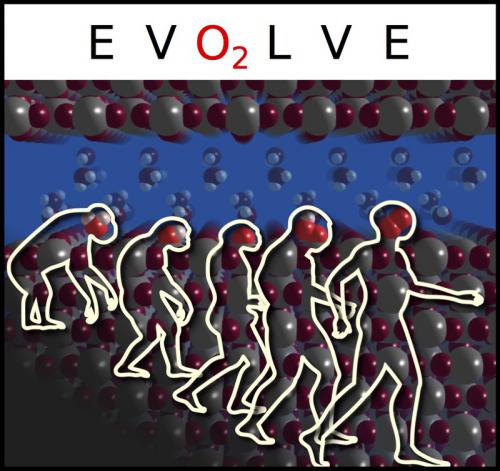A schematic of the catalytic oxygen “evolution” reaction inside a well-defined ruthenium oxide nano-channel structure. The reaction starts with water and proceeds via a number of intermediates (OH, O, and OOH). Finally oxygen gas O2 is evolved. The investigated reaction pathway is indicated from left to right by the bright red and white colored atoms in the front/middle of the figure.
While available solar power easily outpaces human demand, we have to consider the problems of energy storage as we move towards renewable and intermittent sources. Water electrochemistry is a promising energy currency because water is incredibly abundant, it is non-toxic, and these technologies have already shown scalability on an automotive and industrial level.
Unfortunately, however, the adaptation of water electrochemistry is hindered by low efficiencies due to thermodynamic scaling relationships. These scaling relationships couple the adsorption energy of different reaction intermediates, which prevents us from simultaneously achieving all conditions necessary for facile electrolysis or oxygen reduction.
In our work we explore the effects of channel structures on these scaling relationships. Our hope was that interactions across the channel would be able to decouple the energetics of intermediate adsorption based on their size and orientation. We studied both RuO2 and IrO2 under oxygen evolution conditions, and in both cases saw that confinement preferentially stabilized HOO*, breaking previously limiting scaling relationships. We believe that this stabilization was due to a hydrogen bond formation between the surface-bound HOO and oxygen atoms bound to the opposite channel surface. In conclusion, our work predicted that nanoscopic confinement could lower the water splitting overpotential by 200 mV on RuO2, corresponding to a 10% increase in catalytic efficiency.

